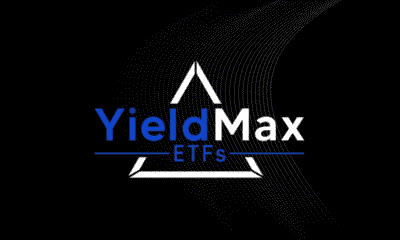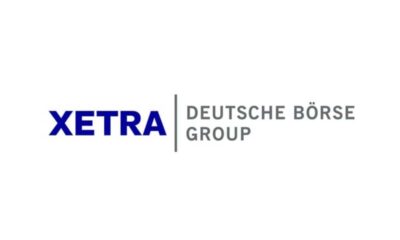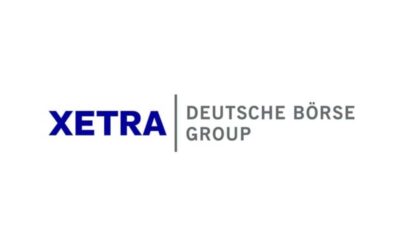Forskning tyder på att marknadsindexviktade index har en tendens att köpa högt och sälja lågt. Teslas inträde till S&P 500 har kostat investerare att spåra eller jämföra jämfört med index för blue-chip amerikanska aktier mer än 45 miljarder dollar sedan december.
Elfordonets pionjär var redan världens sjunde största börsnoterade företag när det äntligen antogs till S&P i slutet av 2020 – mer än ett decennium efter att ha kommit in på några andra index som Russell 1000.
Dess aktiekurs hade ökat 764 procent under de 12 månaderna i förväg – delvis i väntan på tvångsköp vid inträde till S&P 500 – och dess börsvärde motsvarade det totala marknadspriset för de nio största biltillverkarna per försäljningsvolym, som mellan dem stod för 94 procent av den globala försäljningen 2020, enligt Research Affiliates, ett kaliforniskt investeringshus.
Har sett sin aktiekurs sjunka
Teslas aktiekurs har rasat sedan Teslas inträde till S&P 500, sedan sex månader efter antagandet medan aktien som ersattes, Apartment Investment and Management (AIV), steg med 48 procent.
Denna ombalansering kostade investerare 41 baspunkter i sina portföljer, säger Rob Arnott, ordförande för RA, en snygg summa med tanke på att S&P 500 spåras direkt med cirka 4,6 triljoner kapital, med ytterligare 6,6 triljoner dollar som jämförs med indexet.
”AIV överträffade Tesla med en fantastisk marginal”, sa Arnott i ett blogginlägg. ”En pensionär med en kapitalallokering på 100 000 $ till S&P 500 är cirka 410 $ fattigare till följd av indexrebalanseringen i december. Tyvärr är denna kostnad helt obemärkt av investerare eftersom den bakas in i indexets resultat. ”
Även om Tesla är ett extremt fall föreslår Research Affiliates analys att marknadsvärde-vägda index har en tydlig tendens att systematiskt ”köpa högt, sälja lågt” när de balanserar om.
Sedan 2000 har i genomsnitt 23 aktier gått in (och lämnat) S&P 500 varje år, ibland på grund av företagsåtgärder som fusioner, förvärv eller konkurs bland befintliga beståndsdelar, vid andra tillfällen till följd av tillväxt av företag utanför indexet.
65 procent av aktierna stiger på tillkännagivandet
RA fann att 65 procent av de nya aktörerna ser sina aktiekurser stiga mellan den dag då deras förestående tillträde tillkännages och dagen då förändringen träder i kraft.
Däremot faller 60 procent av de diskretionära strykningarna från index mellan tillkännagivande och utträdesdatum. I genomsnitt presterade raderingarna tilläggen med 6,2 procentenheter under denna period, plus ytterligare 1 poäng dagen efter ändringen antogs när indexspårarna kommer ikapp.
Under de efterföljande 12 månaderna går priserna i motsatt riktning: tillägg i genomsnitt underpresterar indexet, om än med bara 1 procentenhet, men strykningar slår det med i genomsnitt nästan 20 poäng.
Som ett resultat beräknade RA att investerare vanligtvis förlorar 20-40 bp per år från att ”aktier läggs till för högt pris och säljs till för lågt” under ombalanseringsprocessen.
”Traditionella index förkroppsligar inbyggda ineffektivitetseffektivitet”, skrev Arnott. ”Indexbalansen är en fantastisk möjlighet. . . att göra det motsatta av vad indexet gör: köp strykningen och sälj tillägget. ”
Arnott, vars verksamhet är en förespråkare för faktorbaserad ”smart beta” -investering, sa att detta inte var en kritik av S&P i sig utan snarare en brist som är inneboende för alla marknadsviktade index.
Förvärras av hedgefonder
Vitali Kalesnik, europeisk forskningsdirektör vid RA, sa att ombalanseringseffekten sannolikt kommer att förvärras av att hedgefonder köper aktier när deras förestående marknadsföring tillkännages med full vetskap om att indexspårare som ETF:er kommer att behöva köpa dem när de kommer in i ett index.
”Vem drar nytta av detta? Hedgefonder och andra likviditetsleverantörer. Vem betalar? Investerarna, varav många är pensionärer som samlar miljarder dollar i S&P, säger Kalesnik. ”Detta gäller alla index och strategier närhelst något handelsmönster blir förutsägbart och kan vara front run.”
Medan en årlig förlust på 20-40bp kanske inte är enorm, hävdade Kalesnik att detta ”kan vara tio gånger den angivna förvaltningsavgiften” för en indexspårare, där investerare ofta byter fonder för att spara en bråkdel av detta belopp.
Medan index inte har något annat val än att återbalansera regelbundet hade RA några förslag för att minska effekten.
Att välja tillägg baserat på deras femåriga genomsnittliga marknadsvärde kan hjälpa till att undvika att tillåta ”heta” aktier som visar sig vara tillfälliga high-fliers, medan banding kan begränsa ”flip-flop-affärer”, tillägg som snabbt vänds.
Kan överprestera mot index
Kalesnik sa att alla investerare som kan skjuta upp handeln med S&P 500s tillägg och raderingar med ett år ”kan överträffa indexet”.
Alternativt kan man spåra ett index som representerar hela universumet av amerikanska large caps snarare än den ”mycket smala” S&P 500 undvika ”ingångsrisk”, argumenterade han.
Gareth Parker, tidigare chef för indexforskning och design vid S&P, som också har arbetat med RA och nu är ordförande och chefsindexchef för Moorgate Benchmarks, trodde att urvalsmetoden för S&P 500, som inkluderar villkoret att ett företag ska vara lönsam, var ”inte perfekt”.
”Det är i huvudsak” aktiv förvaltning ”. De följer inte objektiva, transparenta regler.
”Resultatet är avvikelser som att lägga till Tesla, och från minnet Google och Microsoft, mycket senare än vad som skulle ha hänt om reglerna följde det normala tillvägagångssättet att lägga till efter storlek, med förbehåll för grundläggande behörighetskriterier,” sa Parker.
Han var emellertid inte övertygad om argument att marknadsvärdeindex i sig ”köper högt och säljer lågt” med tanke på att S&P 500: s meritlista ”är anmärkningsvärt bra jämfört med aktiv förvaltning, även före avgifter”.
Aye Soe, global chef för produkthantering på S&P Dow Jones Indices, sa att dess data antydde vad hon kallade ”indexeffekten” faktiskt hade minskat under det senaste decenniet, vilket minskade förluster relaterade till ombalansering.
”Marknadsviktning är det enda sättet att visa en proportionell representation av tillgångar på ett samlat sätt, det är det enda makrokonsistenta sättet”, tillade hon. ”Människor kritiserar det, men om man tittar på aktiva chefer kan de flesta inte slå det.”

 Nyheter1 vecka sedan
Nyheter1 vecka sedan
 Nyheter3 veckor sedan
Nyheter3 veckor sedan
 Nyheter3 veckor sedan
Nyheter3 veckor sedan
 Nyheter4 veckor sedan
Nyheter4 veckor sedan
 Nyheter3 veckor sedan
Nyheter3 veckor sedan
 Nyheter1 vecka sedan
Nyheter1 vecka sedan
 Nyheter3 veckor sedan
Nyheter3 veckor sedan
 Nyheter2 veckor sedan
Nyheter2 veckor sedan






















